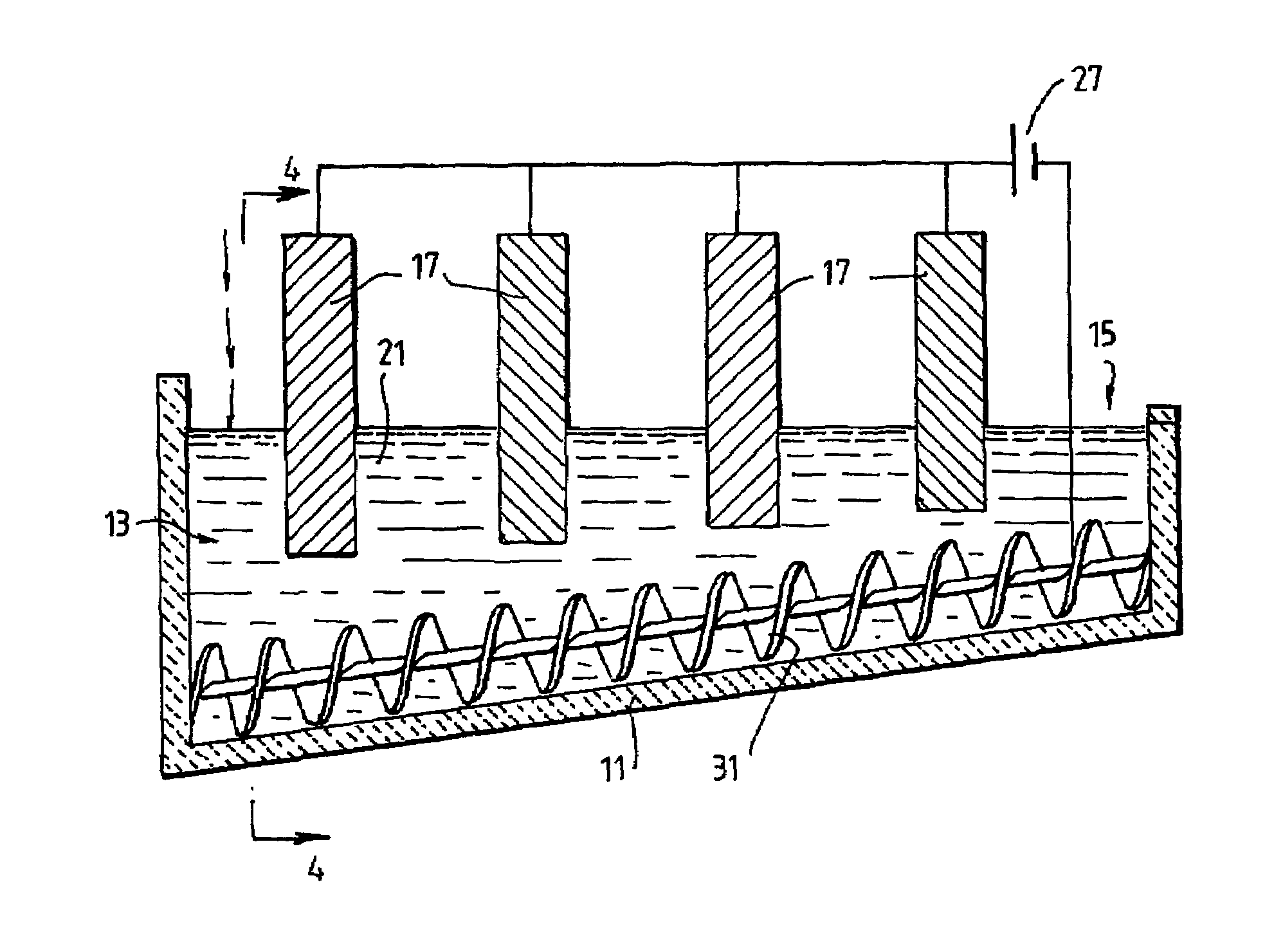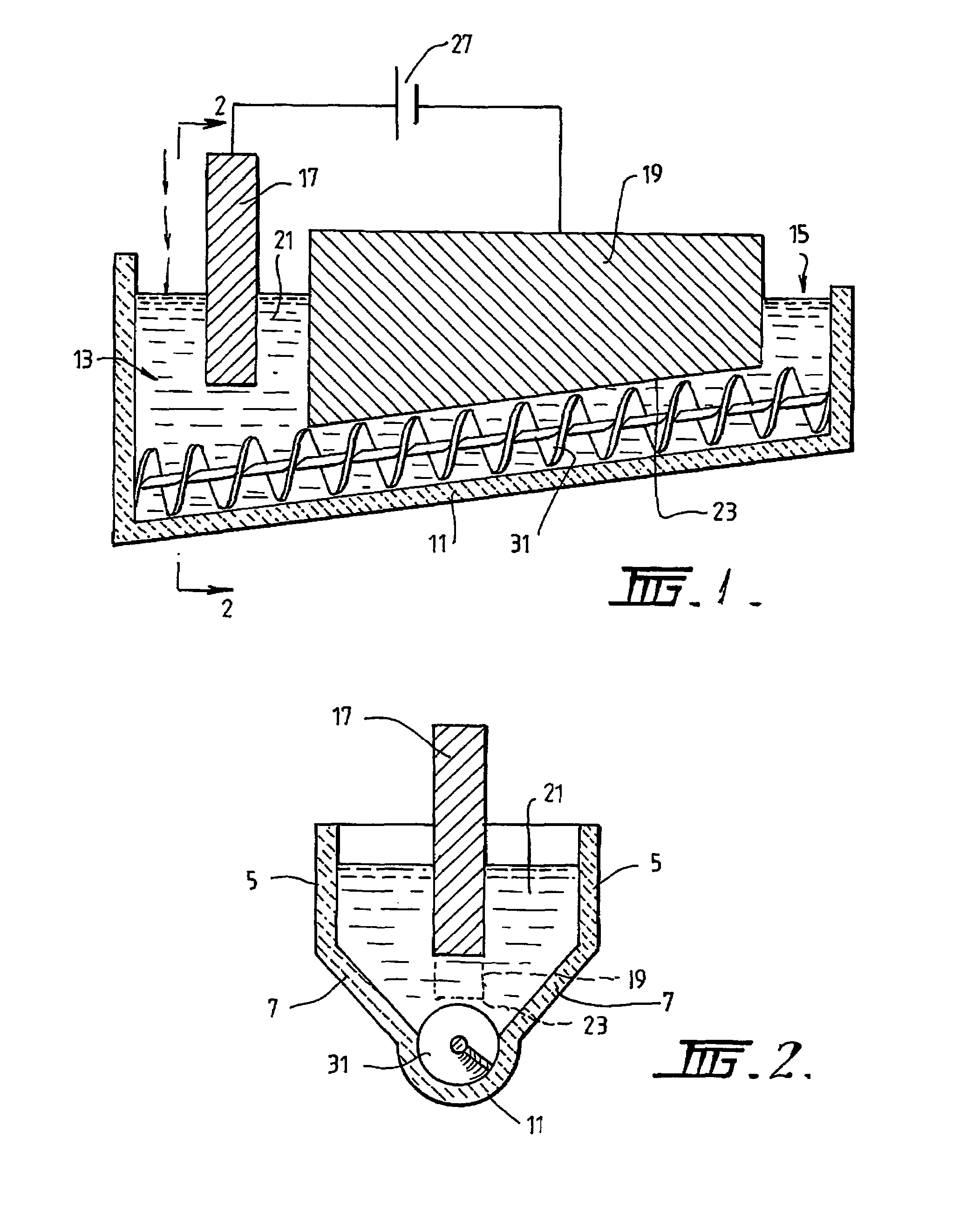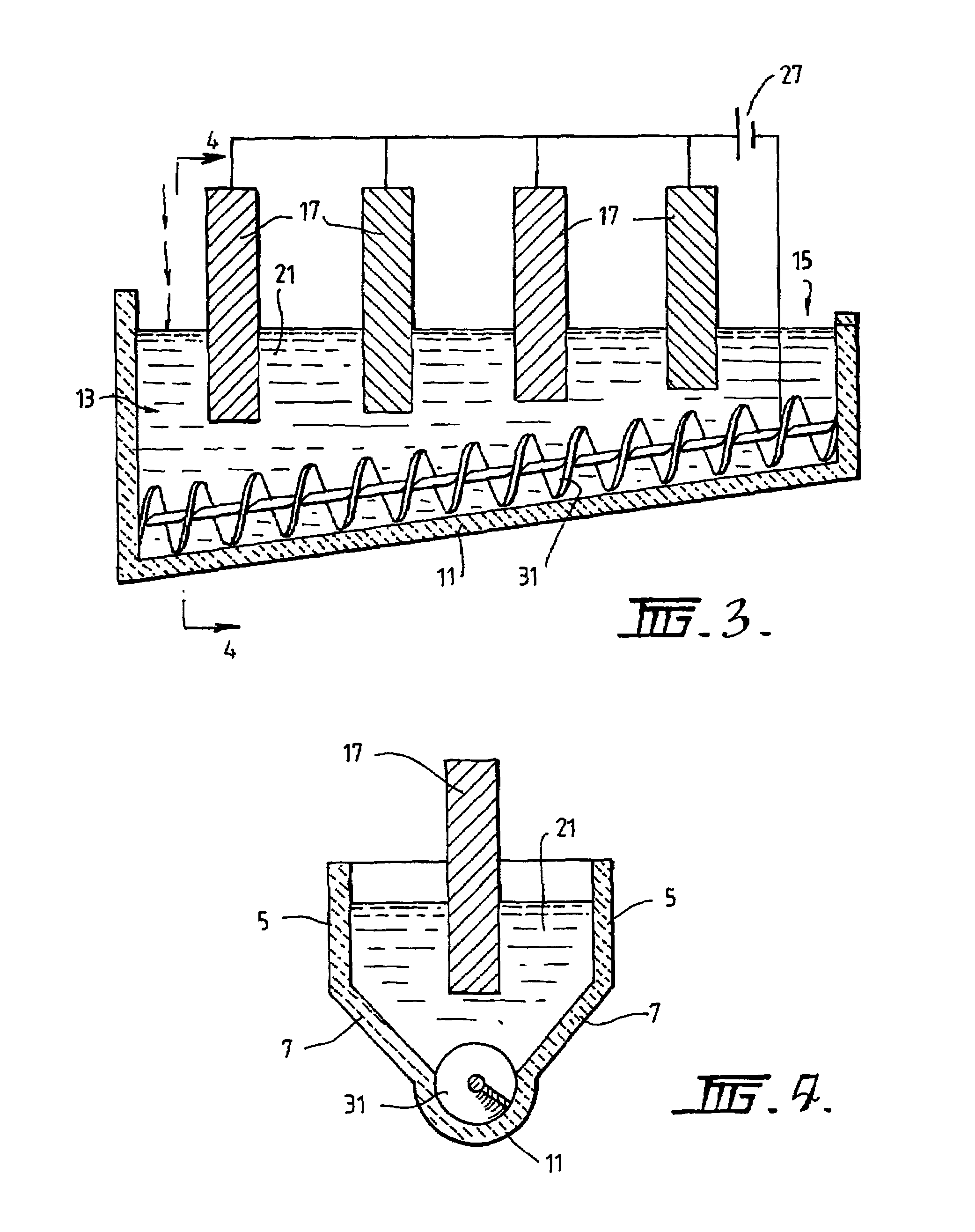Electrochemical reduction of metal oxides
- Summary
- Abstract
- Description
- Claims
- Application Information
AI Technical Summary
Benefits of technology
Problems solved by technology
Method used
Image
Examples
Embodiment Construction
[0089]The following description of the embodiment of the electrochemical cell shown in FIGS. 1 and 2 is in the context of electrochemically reducing powders and / or pellets of titania of less than 3.5 mm to titanium metal having a concentration of oxygen that is no more than 0.2% by weight.
[0090]The cell shown in FIGS. 1 and 2 is generally elongate. The cell includes upper vertical side wall sections 5 and lower downwardly and inwardly converging side wall sections 7. The cell also includes a semi-circular base section 11. The base section 11 is inclined upwardly from a metal oxide powder supply end 13 to a metal discharge end 15. The base section 11 is shaped to receive a screw 31 that is operable to transport metal powder along the inclined upward path from the supply end 13 to the discharge end 15.
[0091]The cell further includes a bath 21 of molten electrolyte.
[0092]The cell further includes an anode 17 located at the supply end 13 of the cell.
[0093]The cell further includes a cat...
PUM
| Property | Measurement | Unit |
|---|---|---|
| Fraction | aaaaa | aaaaa |
| Percent by mass | aaaaa | aaaaa |
| Temperature | aaaaa | aaaaa |
Abstract
Description
Claims
Application Information
 Login to View More
Login to View More - R&D
- Intellectual Property
- Life Sciences
- Materials
- Tech Scout
- Unparalleled Data Quality
- Higher Quality Content
- 60% Fewer Hallucinations
Browse by: Latest US Patents, China's latest patents, Technical Efficacy Thesaurus, Application Domain, Technology Topic, Popular Technical Reports.
© 2025 PatSnap. All rights reserved.Legal|Privacy policy|Modern Slavery Act Transparency Statement|Sitemap|About US| Contact US: help@patsnap.com



